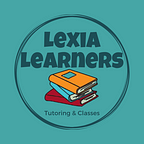Five Most Important Facts You Need to Know About Dyslexia
As we celebrate Dyslexia Awareness Month this October, we must continue educating society about what dyslexia truly is. Lexia Learners’ two primary goals during this special occasion are fighting the stigma surrounding dyslexic people and advocating for the dyslexic community so that they can receive the right help and support.
For parents who are new to the dyslexic world or still navigating through dyslexia, it is extremely beneficial to learn the essential facts early on.
Here are the five most important dyslexia facts everyone should know:
1. Dyslexia is inherited/genetic. There is no one to blame for a person’s dyslexia. The blame game on dyslexia will only end if more people are aware that dyslexia is hereditary. Multiple risk factors can cause dyslexia, but the most significant risk factor is when it runs in the family. A child coming from families with a history of dyslexia has a 50% chance of acquiring it. Moreover, some people might not know what the symptoms of dyslexia are, even the teachers. So, if people will tell you (including the teachers) that what you or your learner is experiencing could not possibly be dyslexia, don’t easily give up and continue advocating for your child in school.
2. At least 40% of dyslexic people also have Attention Deficit Hyperactivity Disorder (ADHD). ADHD is a neurobehavioral condition that causes above-normal energy and impulsive behaviors, affecting a person’s daily life in some negative ways. However, ADHD alone won’t cause unique signs of dyslexia.
3. The growth process of dyslexic individuals is different. With dyslexia being a lifelong condition that has varying symptoms, it is no surprise that the development of a dyslexic learner also varies. Some children spend longer dealing with speech problems and poor vocabulary, while some struggle longer with decoding symbols and sounds that are not registered properly in the brain. Some learn how to compensate for their learning difficulties faster than other dyslexic learners. Again, this is mostly because every dyslexic brain is structured differently; therefore, information processing differs from one another.
4. Dyslexic learners often have directional confusion. In fact, this is a common symptom of dyslexia. Directional confusion may come in different forms: left and right confusion, up and down confusion, confusion with words that signal direction or sequence (ex. first-last, before-after, over, under), and the north, south, east and west confusion. Dyslexic learners who experience this directional confusion also often struggle in reading clocks.
5. Poor memory recall is a common problem among dyslexic learners. One important thing that people must understand about dyslexia is that the problem is not about taking in the information to the brain but retrieving or making use of the stored information when the situation calls for it. Dyslexic learners often experience difficulties with sequences that may seem illogical, such as the alphabet, days of work, calendar, and many more. Another major struggle for dyslexic learners is remembering rote memory facts, such as the state capitals and multiplication table.
This month and every month, let’s join hands and continue to raise awareness that dyslexia is a gift and not a sign of stupidity. Moreover, let’s inspire more dyslexic learners to work harder and never give up on their dreams because they, too, are capable of doing great things and achieving success despite their learning difference. It is time that society will view dyslexic people as “unique in a good, special way” and not as “different and do not belong.” Having dyslexia is not so bad, as long as you know what you are looking at, what kind of help the person needs, or how to help.
This Dyslexia Awareness Month, let’s put an end to all the negative talks about dyslexia and spread more dyslexia facts and success stories!
References:
Al-Shidhani, T. A., & Arora, V. (2012). Understanding dyslexia in children through human development Theories. Sultan Qaboos University medical journal, 12(3), 286–294. https://doi.org/10.12816/0003141
du Plessis, S. (2021). Directional confusion might be a sign of dyslexia. Edublox. https://www.edubloxtutor.com/directional-confusion-may-sign-dyslexia/
Structural brain differences in kids with dyslexia (2013). Great Schools. https://www.greatschools.org/gk/articles/structural-brain-differences-in-kids-with-dyslexia/
